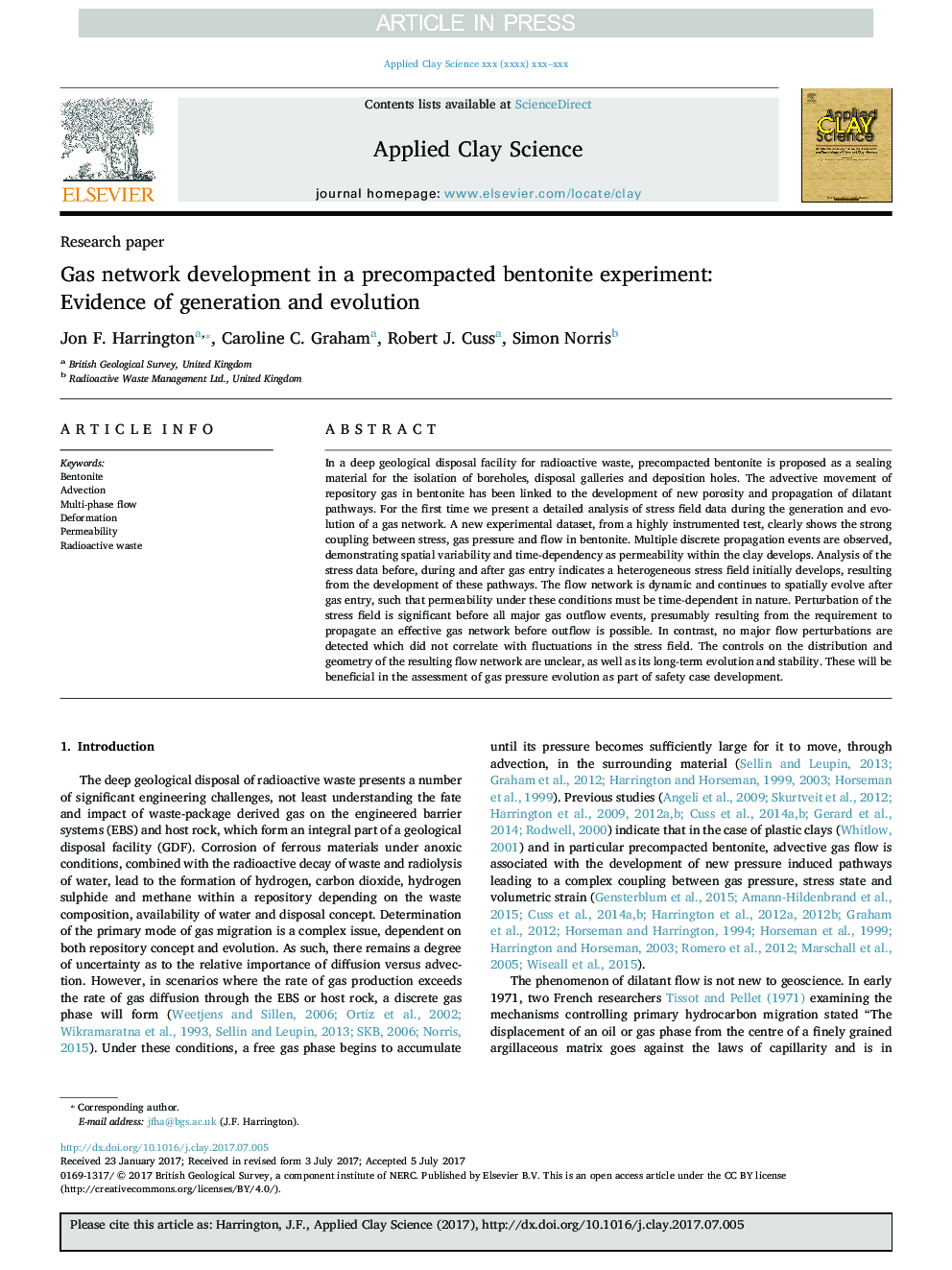| Article ID | Journal | Published Year | Pages | File Type |
|---|---|---|---|---|
| 5468571 | Applied Clay Science | 2017 | 10 Pages |
Abstract
In a deep geological disposal facility for radioactive waste, precompacted bentonite is proposed as a sealing material for the isolation of boreholes, disposal galleries and deposition holes. The advective movement of repository gas in bentonite has been linked to the development of new porosity and propagation of dilatant pathways. For the first time we present a detailed analysis of stress field data during the generation and evolution of a gas network. A new experimental dataset, from a highly instrumented test, clearly shows the strong coupling between stress, gas pressure and flow in bentonite. Multiple discrete propagation events are observed, demonstrating spatial variability and time-dependency as permeability within the clay develops. Analysis of the stress data before, during and after gas entry indicates a heterogeneous stress field initially develops, resulting from the development of these pathways. The flow network is dynamic and continues to spatially evolve after gas entry, such that permeability under these conditions must be time-dependent in nature. Perturbation of the stress field is significant before all major gas outflow events, presumably resulting from the requirement to propagate an effective gas network before outflow is possible. In contrast, no major flow perturbations are detected which did not correlate with fluctuations in the stress field. The controls on the distribution and geometry of the resulting flow network are unclear, as well as its long-term evolution and stability. These will be beneficial in the assessment of gas pressure evolution as part of safety case development.
Related Topics
Physical Sciences and Engineering
Earth and Planetary Sciences
Geochemistry and Petrology
Authors
Jon F. Harrington, Caroline C. Graham, Robert J. Cuss, Simon Norris,
